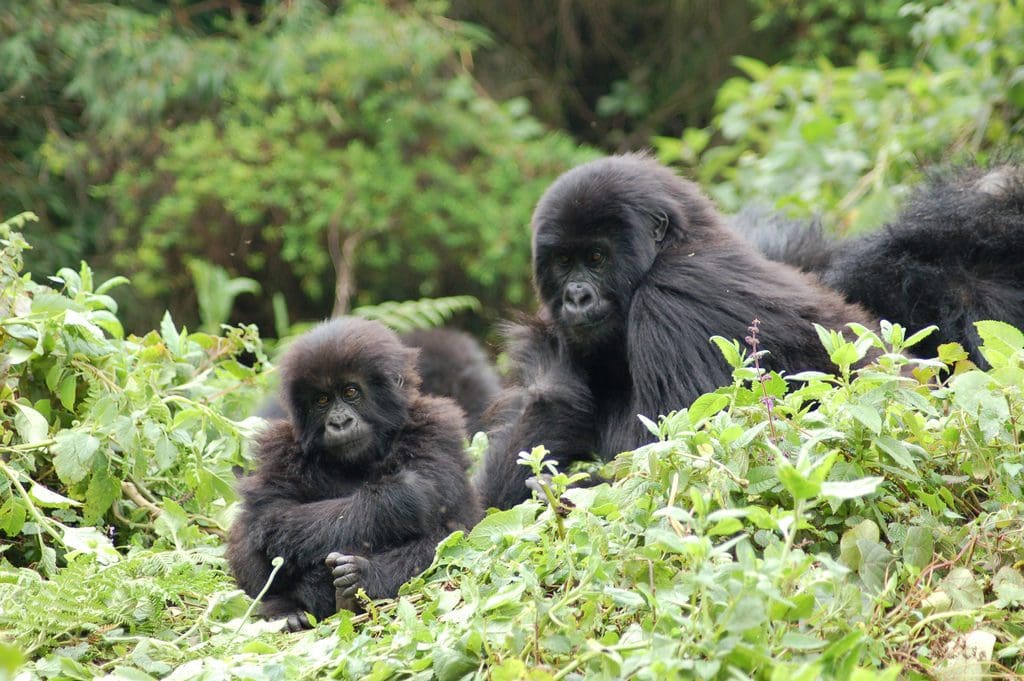 You’ve been trekking through the jungle mist for over an hour, anticipation building with every step. Suddenly your guide raises his hand, motioning that you’ve found the elusive troop, and your small gorilla trekking group stops in their tracks. Before you, through the vines and foliage, you see a clearing occupied by a family of mountain gorillas – two females methodically grooming themselves as three youngsters climb, tumble, and romp, and a massive silverback patriarch watching over them all from a slight distance. It’s a privileged and surreal experience as if you stepped right into their family’s living room.
You’ve been trekking through the jungle mist for over an hour, anticipation building with every step. Suddenly your guide raises his hand, motioning that you’ve found the elusive troop, and your small gorilla trekking group stops in their tracks. Before you, through the vines and foliage, you see a clearing occupied by a family of mountain gorillas – two females methodically grooming themselves as three youngsters climb, tumble, and romp, and a massive silverback patriarch watching over them all from a slight distance. It’s a privileged and surreal experience as if you stepped right into their family’s living room.
Where Can You See Gorillas in the Wild?
You can see gorillas in the wild in only two places on the globe: the Virguna Mountains at the juncture of Rwanda, Uganda, and Democratic Republic of Congo (DR Congo), and in Uganda’s Bwindi Impenetrable Forrest.
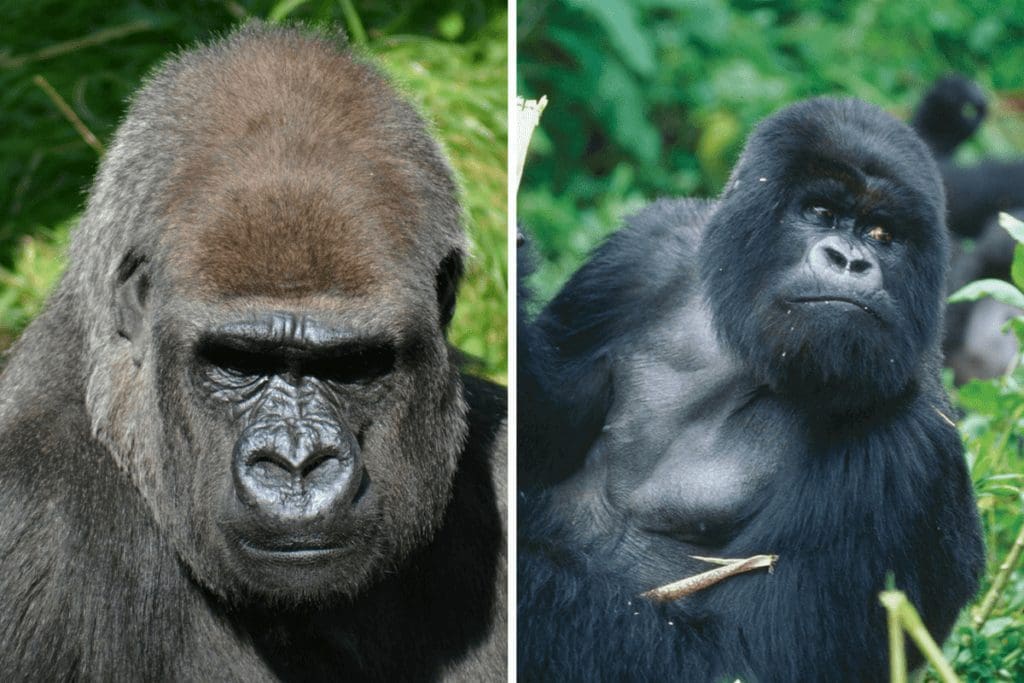
There are two broad species of gorillas: lowland and mountain gorillas. The lowland gorillas are a bit smaller with brown hair and a pronounced brow ridge. They enjoy a plentiful population in DR Congo. The endangered mountain gorilla is larger with a black coat and is found predominantly in Rwanda and Uganda. Mountain gorillas are the more sought after sightings, although only 800 to 900 mountain gorillas remain in the wild.
About 400 of the rare primates live in Uganda’s Bwindi Impenetrable Forrest. Volcanoes National Park in Rwanda is also home to 10 mountain gorilla troops, although they travel freely across borders, no visa required!
How Much Does Gorilla Trekking Cost?
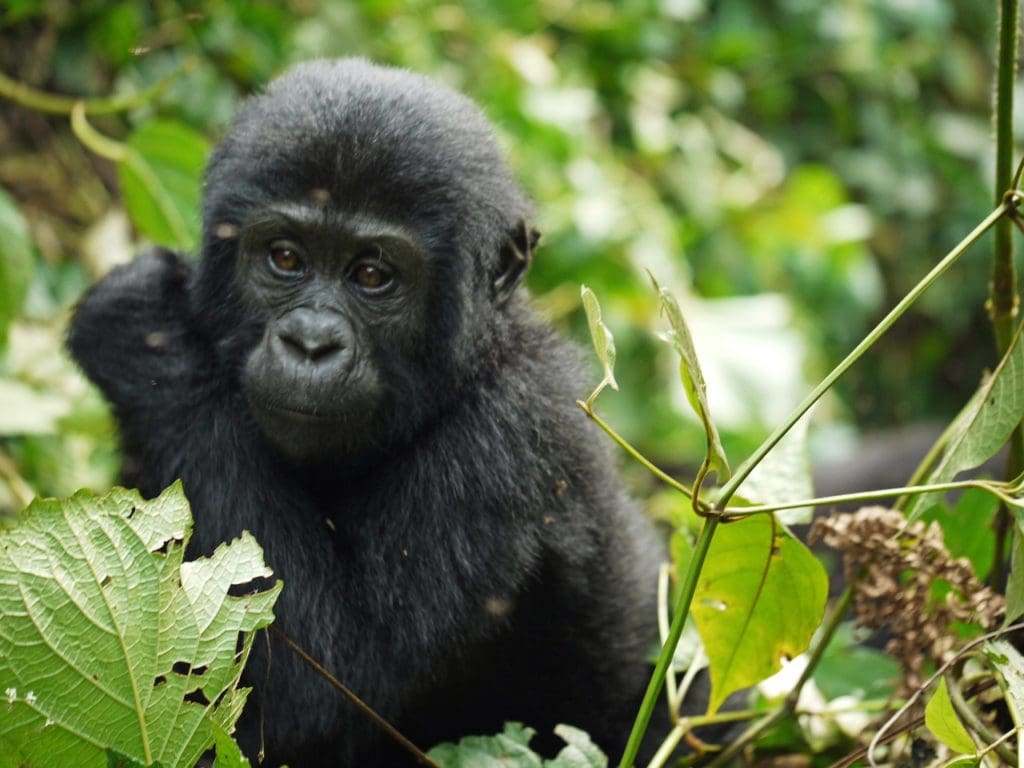 You must have a permit for gorilla trekking and only 80 permits are issued per day, so it is imperative to purchase your permit well in advance. Sightings are never guaranteed, although trackers are deployed ahead of the trekkers and communicate with the guides, so the gorillas are nearly always located. Travel Maestro tip: You must be over the age of 15 to obtain a gorilla trekking permit.
You must have a permit for gorilla trekking and only 80 permits are issued per day, so it is imperative to purchase your permit well in advance. Sightings are never guaranteed, although trackers are deployed ahead of the trekkers and communicate with the guides, so the gorillas are nearly always located. Travel Maestro tip: You must be over the age of 15 to obtain a gorilla trekking permit.
In Rwanda, the permit cost doubled in 2017 to $1,500 per person, per day. In Uganda, the cost is $600 per person, per day. The lowest cost gorilla permit is in DR Congo at $450. It includes two days of gorilla trekking, although you will likely be sighting lowland gorillas, not mountain gorillas.
Travel Maestro tip: Although you can obtain a gorilla trekking permit and travel independently, we highly recommend using an experienced tour operator who will handle the permits, arrange comfortable to luxury accommodations, and provide all transportation. Discuss options with your Covington advisor.
How Strenuous is Gorilla Trekking?
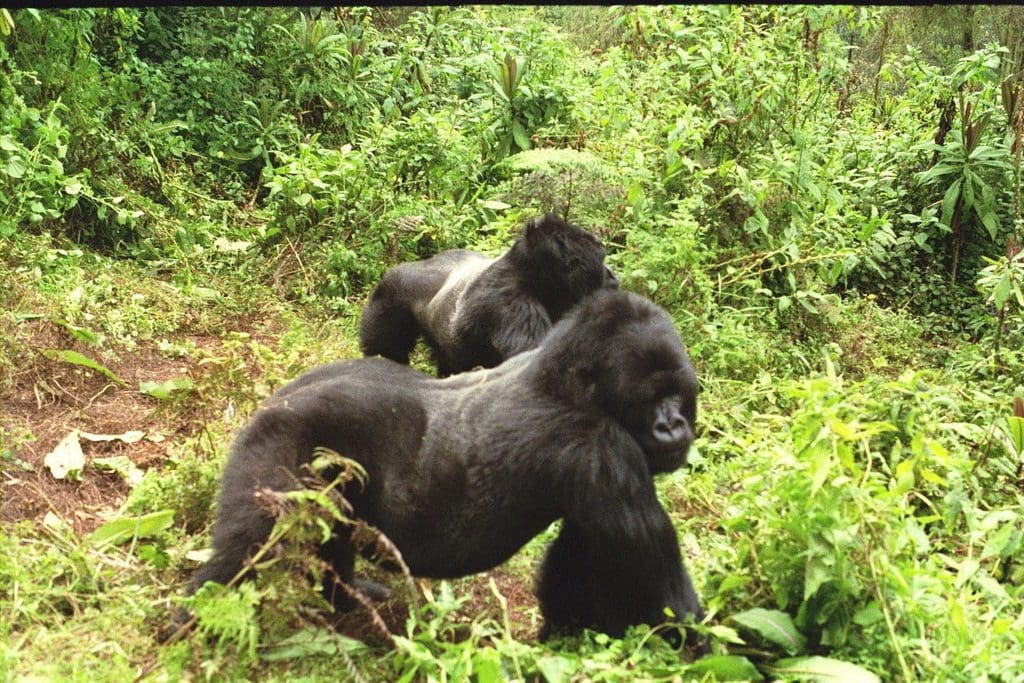
Trekkers deploy in groups of no more than eight, plus a guide and one or two armed guards/porters. You should be prepared to hike two to four hours, although the gorillas may be found in less time. Terrain ranges from rolling hills to steep slippery slopes, so walking sticks are provided and you’ll want to accept. Mountain gorillas live at an altitude from 2200 to 4300 meters, so lowlanders are likely to feel the effects on their breathing and heart rate. It is moderately strenuous but a reasonably fit person can make it. Travel Maestro tip: Drink a lot of purified water during the trek.
Your guide will machete a path through the undergrowth as you climb and you can expect to get muddy and wet from the ever-present cloud forest mist. Travel Maestro tip: Good hiking boots are essential and you’ll want a light rain jacket. Wear long sleeves and tuck pants into socks to keep jungle critters out. You’ll probably appreciate wearing durable gardening gloves, too.
Once the troop is located, observation time is limited to one hour, so not to stress the gorilla family. Gorillas are very susceptible to our human illnesses because they share 98% of our DNA. You must stay 7 meters (23 feet) away and can’t go at all if you are sick. Observers cannot initiate interaction with the gorillas, although they are curious and often come near and touch people. You just sit quietly and observe the great apes and it will be the fastest hour of your life!
Which Country is Best for Gorilla Trekking?
Video credit: Calum Robinson
Logistically, access to the gorilla trekking starting points is easier in Rwanda. You can reach the Volcanoes National Park in a couple hours drive from the international airport of Kigali. Despite the cost of the Rwanda permit, this is a good choice if you are adding a gorilla trekking experience on to a safari elsewhere in Africa, or have a limited amount of time.
On the other hand, Uganda’s Bwindi Impenetrable Forrest is an 8- to 10-hour drive from the international airport in Entebbe, so you have to add a night of accommodation before and probably a night after your trek. However, Uganda has enough interesting sights in addition to gorilla trekking to fill out a week. Murchison Falls National Park is where the Nile crashes 43 meters downward in a powerful waterfall (think The African Queen with Katharine and Humphrey). You can spot an array of wildlife and birds in Queen Elizabeth National Park and visit the equator at Kayabwe.
Travel Maestro tip: DR Congo has endured widespread civil war and economic instability for the past three decades. Gorilla trekking there is only advised for seasoned Africa travelers.
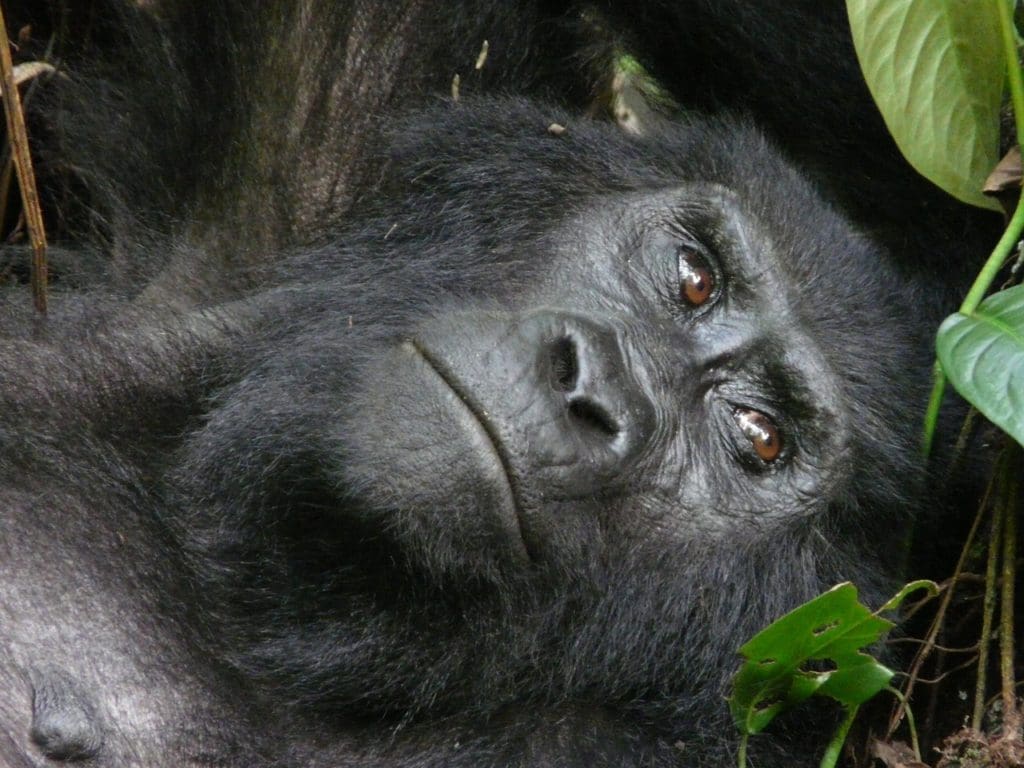 To be sure, gorilla trekking is relatively expensive and takes an adventurous spirit and physical fortitude. But watching the adorable youngsters swing and play, sensing the deep understanding in the eyes of an adult, and being so close to the raw power of a massive male is a priceless experience you’ll carry with you forever.
To be sure, gorilla trekking is relatively expensive and takes an adventurous spirit and physical fortitude. But watching the adorable youngsters swing and play, sensing the deep understanding in the eyes of an adult, and being so close to the raw power of a massive male is a priceless experience you’ll carry with you forever.
To find out more about gorilla trekking, contact the luxury adventure experts at Covington.
Top image credit: Joachim Huber







Leave a Reply